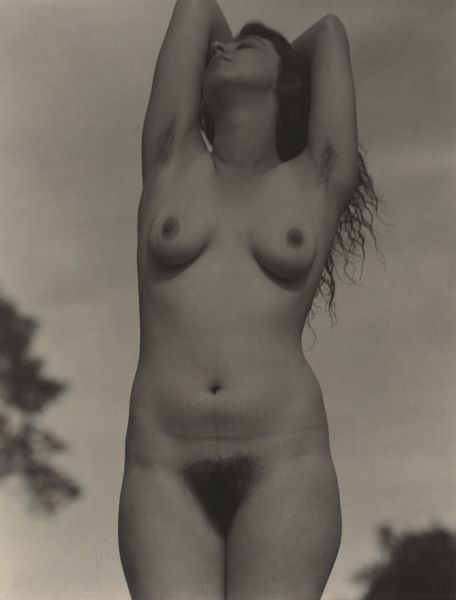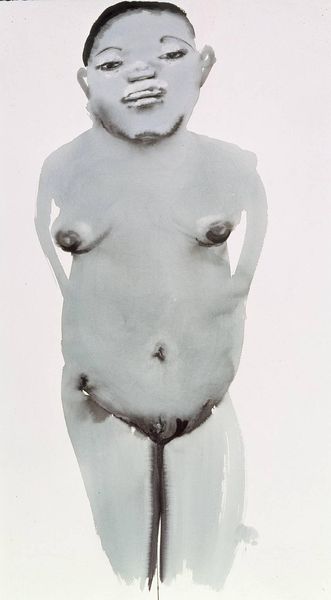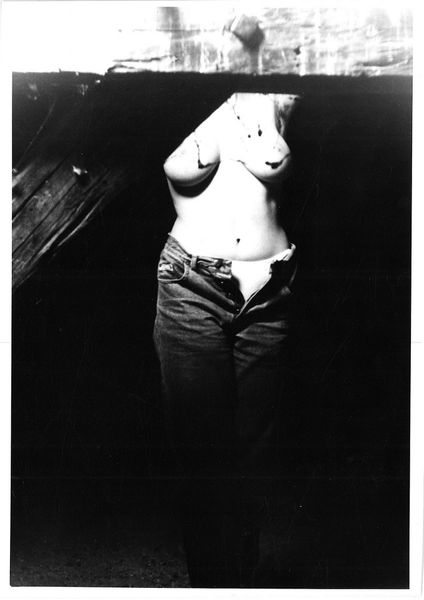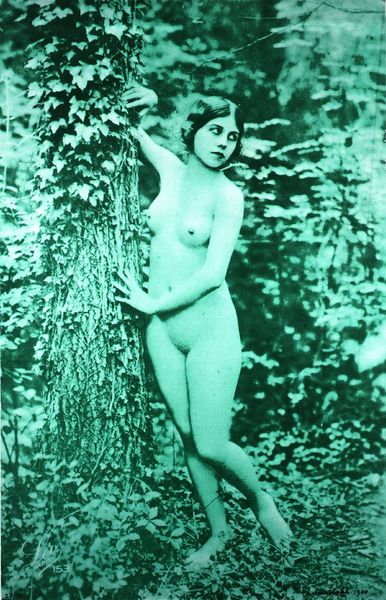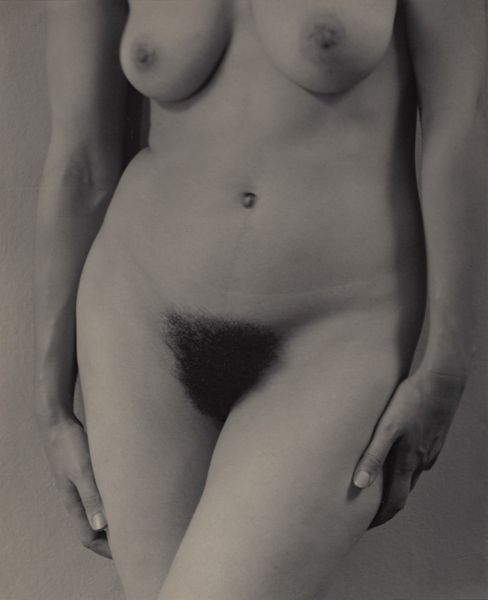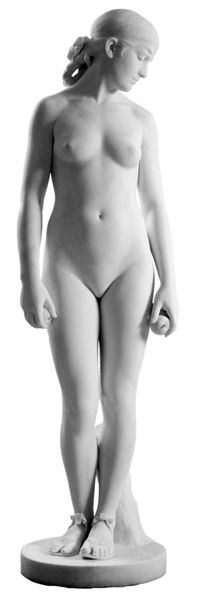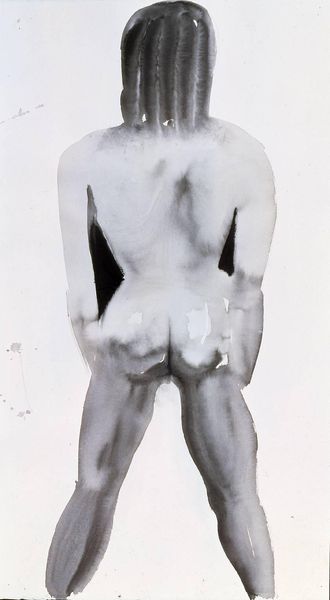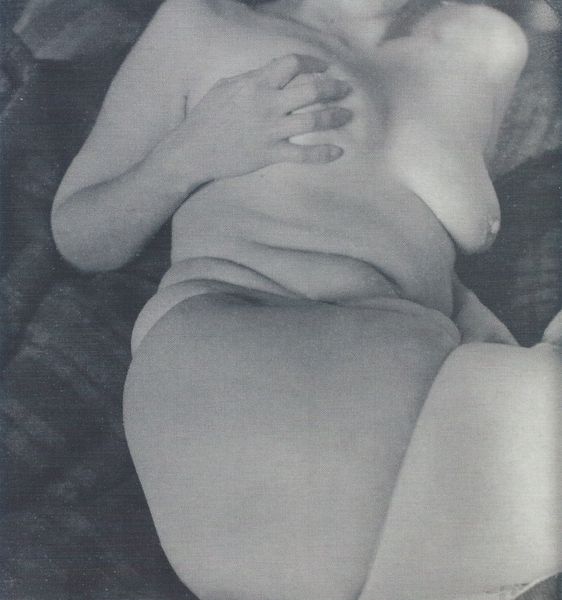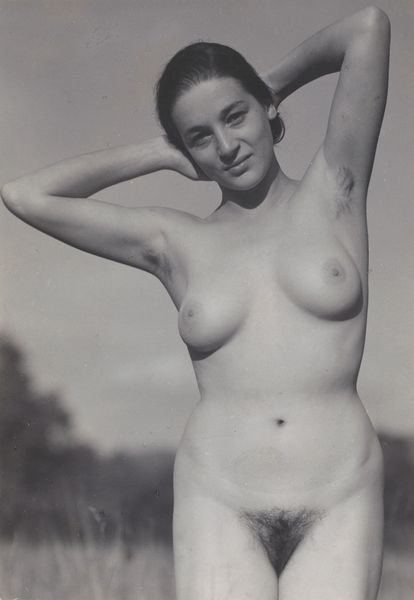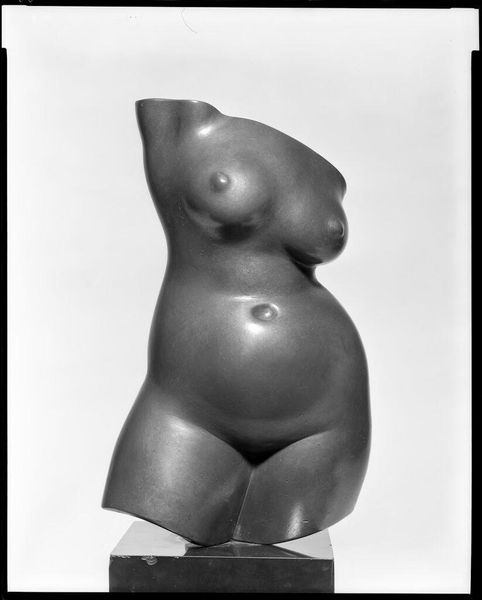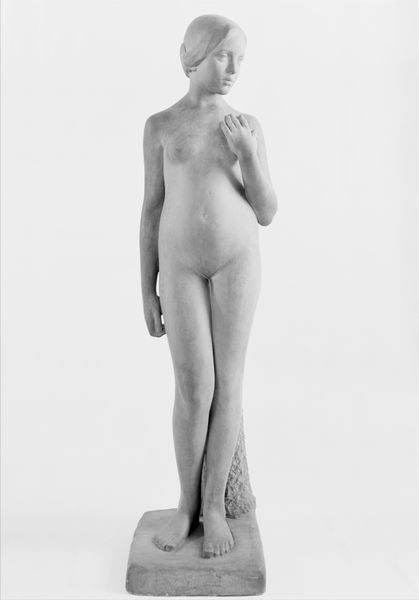
Dimensions: image: 9.9 x 9.6 cm (3 7/8 x 3 3/4 in.) sheet: 12.4 x 10 cm (4 7/8 x 3 15/16 in.)
Copyright: National Gallery of Art: CC0 1.0
Curator: Welcome. We’re standing before Harry Callahan’s "Eleanor, Aix-en-Provence" from 1958, a gelatin-silver print. Editor: There's a striking contrast between the foreground's textural roughness and the soft, almost ethereal figure that emerges through the layering of landscape and human form. It makes you feel disoriented for a second. Curator: Absolutely. Callahan masterfully uses the darkroom process. He would often use techniques like multiple exposure to create images that pushed the boundaries of traditional photography, blending subject matter in complex and intriguing ways. In this instance, we have an undressed body exposed on top of landscape. Editor: It brings to mind a more ecological, almost symbiotic view of the female body, embedding her within nature. I think, it almost domesticates this natural raw scenery into our familiar notion of body image; Callahan really takes a nature/nurture approach to materiality. How do you view that composition? Curator: I’d agree. From a purely formal perspective, notice how the verticality of the trees echoes the human form. The overlapping of textures, like the foliage mimicking hair, generates a kind of visual echo and interrelation throughout the image. This visual relationship establishes a narrative that’s left for interpretation by us. Editor: Thinking of this as a gelatine print makes you wonder, however, about what he decided to obscure from this perspective. He allows the female anatomy but restricts it into soft tones. Was this material an accessible type? I think he carefully negotiates female form, whilst making this into mass production. It also leaves me wondering, in his dark room did Callahan reflect upon the labour he imposed, as a viewer on both the subject and process of making this artwork? Curator: Your perspective makes me consider its possible political impact regarding accessibility to viewership during 1958s America; but it feels almost transcendent, especially given the delicacy of the monochrome. Thank you for lending such material nuance. Editor: My pleasure, the process unveils different viewing platforms.
Comments
No comments
Be the first to comment and join the conversation on the ultimate creative platform.

